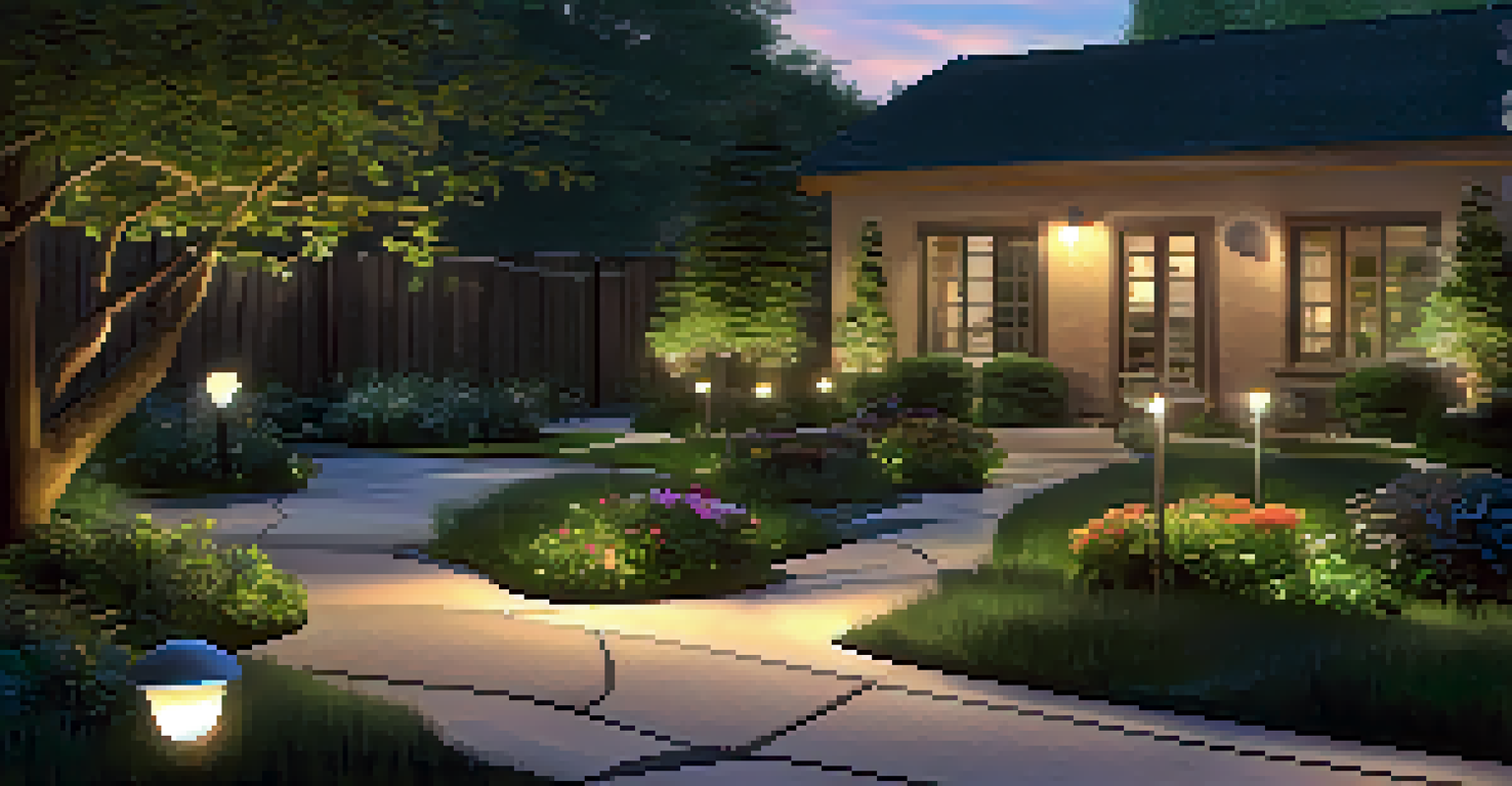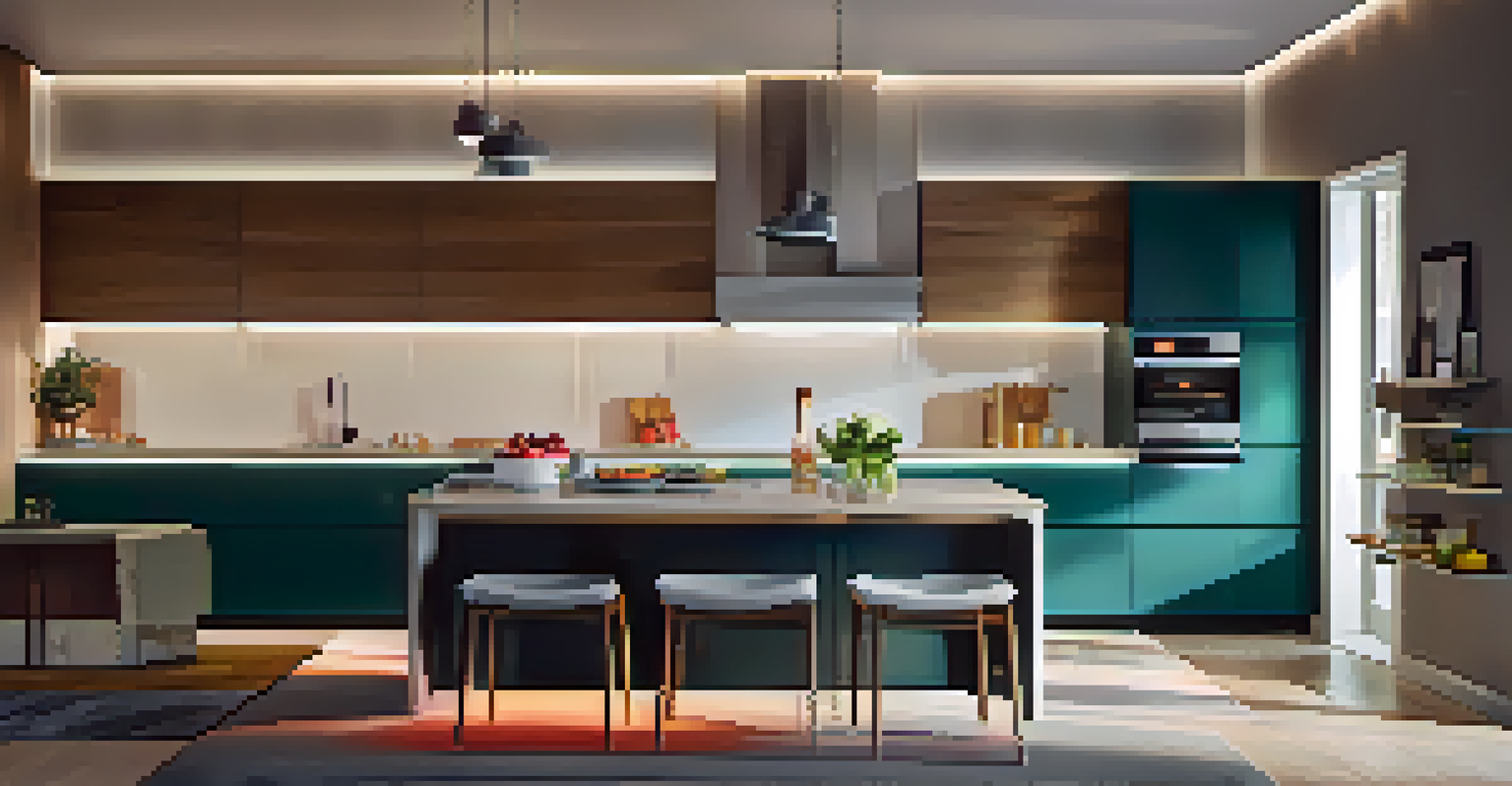Integrating Smart Lighting into Home Automation Systems

Understanding Smart Lighting and Home Automation
Smart lighting refers to advanced lighting solutions that can be controlled remotely via smartphone apps or voice assistants. This technology allows homeowners to customize their lighting experience, making it more convenient and efficient. Meanwhile, home automation encompasses various smart devices that work together to enhance comfort and security in your living space.
The future is already here — it's just not very evenly distributed.
Imagine walking into a room where the lights turn on automatically as you enter, creating a warm and welcoming atmosphere. This is just one example of how smart lighting can elevate your home automation experience. By integrating smart lighting with other automated systems, you unlock a world of possibilities that cater to your specific needs.
Ultimately, the integration of smart lighting into home automation not only enhances convenience but also improves energy efficiency. With the ability to manage lights remotely, homeowners can reduce energy consumption and lower utility bills, making smart lighting a wise investment.
Benefits of Integrating Smart Lighting
Integrating smart lighting into your home automation system comes with a variety of benefits. Firstly, it allows for customizable lighting scenes that you can adjust based on your mood or activity. Whether you’re hosting a dinner party or enjoying a cozy movie night, the right lighting can significantly enhance the experience.

Another notable advantage is the energy savings associated with smart lighting. Many smart bulbs use LED technology, which consumes less power than traditional incandescent bulbs. Additionally, with features like scheduling and motion sensors, lights can be set to turn off when not in use, further reducing energy waste.
Moreover, smart lighting can improve security at home. By programming your lights to simulate your presence when you're away, you can deter potential intruders. This blend of convenience and safety makes integrating smart lighting into your home automation system an appealing choice for many homeowners.
Choosing the Right Smart Lighting Solutions
When it comes to selecting smart lighting solutions, there are numerous options available on the market. From smart bulbs to smart switches and fixtures, you should consider what best fits your lifestyle and existing setup. For instance, if you're renting, smart bulbs may be a more practical choice as they can easily be swapped out without any permanent changes.
Technology is best when it brings people together.
Additionally, compatibility with your current home automation system is crucial. Before purchasing, check if the smart lighting products you’re interested in work seamlessly with your existing devices, such as smart speakers or hubs. This ensures a smoother integration and enhances the overall functionality of your home automation setup.
Lastly, don’t overlook the importance of smart lighting features. Look for options that offer color changing, dimming capabilities, and scheduling. These features can provide a more tailored lighting experience, allowing you to create the perfect ambiance for any occasion.
Installing Smart Lighting: A Step-by-Step Guide
Installing smart lighting is generally a straightforward process, but it does require careful planning. Start by mapping out the areas where you want smart lights and determining which type of smart lighting solutions you’ll use. This will help you visualize the final layout and ensure you have all necessary equipment before you begin.
Next, follow the manufacturer's instructions for installation. For smart bulbs, it's as simple as replacing your existing bulbs with smart ones. If you're installing smart switches, it may require some electrical work, so don't hesitate to consult a professional if you're not comfortable doing it yourself.
Once installed, connect your smart lights to your home automation hub or app. This step typically involves downloading an app and following the setup prompts. After connecting, you can customize your settings, create lighting scenes, and even integrate your smart lights with other devices for a fully automated experience.
Integrating Smart Lighting with Other Automation Devices
To truly maximize the benefits of smart lighting, consider how it can work alongside other home automation devices. For example, integrating smart thermostats with your lighting system can optimize energy use. You can program your lights to dim when the thermostat adjusts the temperature for a more comfortable environment.
Another great integration is with smart security systems. Imagine if your outdoor lights automatically turned on when your security cameras detected motion. This not only enhances your home’s security but also provides peace of mind when you're away.
Additionally, think about how smart lighting can enhance your entertainment systems. By syncing your lights with your television or music system, you can create immersive experiences for movie nights or parties, where the lighting adjusts to match the action on screen or the beat of the music.
Troubleshooting Common Smart Lighting Issues
As with any technology, you may encounter some hiccups when integrating smart lighting into your home automation system. One common issue is connectivity problems, which can often be resolved by ensuring that your smart device is within range of your Wi-Fi network. If you’re experiencing persistent connectivity issues, consider investing in a Wi-Fi extender.
Another potential challenge could be device compatibility. If your smart lighting isn’t responding as expected, double-check that it’s compatible with your home automation hub or app. Sometimes, firmware updates are necessary to ensure all devices work seamlessly together.
Lastly, if you find that your smart bulbs are flickering or not responding to commands, it might be worth checking the bulb itself. Ensure it’s properly installed and that you’re using a compatible dimmer switch, as not all dimmers work with smart bulbs. Troubleshooting these issues can help you maintain a smooth and enjoyable smart lighting experience.
The Future of Smart Lighting in Home Automation
The future of smart lighting in home automation looks bright, with continuous advancements in technology. As more homeowners embrace smart home solutions, we can expect to see even more innovative features that enhance user experience. For instance, artificial intelligence could soon allow lighting systems to anticipate your needs based on your habits and preferences.
Moreover, as energy efficiency becomes increasingly important, smart lighting will likely play a pivotal role in helping homeowners reduce their carbon footprint. With new technologies emerging, such as solar-powered smart lights and energy-efficient LEDs, we can look forward to more sustainable options in the market.

In conclusion, integrating smart lighting into home automation systems not only adds convenience and security but also sets the stage for a more connected and efficient future. As you explore the possibilities, consider how these advancements can enhance your daily life and transform your living space.